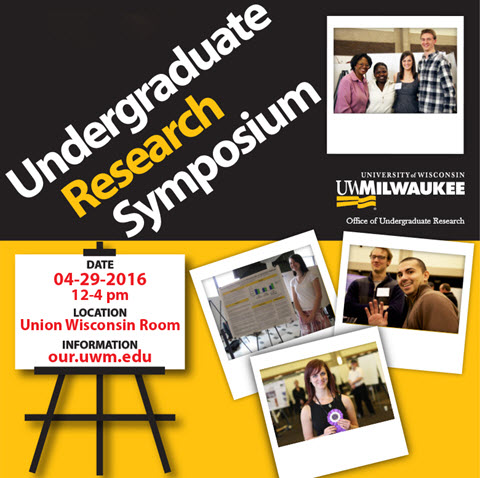Bacterial Nitrification Rates in a Fluidized Sand Biofilter
Mentor 1
Gabriella Pinter
Mentor 2
John Berges
Location
Union Wisconsin Room
Start Date
29-4-2016 1:30 PM
End Date
29-4-2016 3:30 PM
Description
Aquaculture, or aqua-farming, refers to the artificial cultivation of aquatic organisms. Aquaculture could conceivably replace fisheries–which rely on natural fish populations–as a food source. This practice has the potential to alleviate the stress currently induced by over-harvesting and damming, which reduce wild fish populations. The recirculating aquaculture system we studied at the UW-Milwaukee School of Freshwater Sciences consists of three main chambers. The primary tank contains a population of yellow perch that produce ammonia as a waste product. This ammonia is filtered and recycled by chemolithotrophic bacteria present in the system’s two biofilters. The first filter, containing beads, is responsible for solid waste removal. Ammonia and nitrite, which can rapidly reach toxic levels for the fish, leave this filter and are further neutralized into nitrate by two types of bacteria in the biofilter. Since nitrate is not toxic to fish at relatively high levels, this water is then pumped back into the initial holding tank. The mathematical model we are developing is designed to simulate the nitrogen conversion in a mature recirculating biofilter—the main site of nitrification. Parameters in the model were determined using a combination of roller bottle experiments and real-time spikes of the RAS.
Bacterial Nitrification Rates in a Fluidized Sand Biofilter
Union Wisconsin Room
Aquaculture, or aqua-farming, refers to the artificial cultivation of aquatic organisms. Aquaculture could conceivably replace fisheries–which rely on natural fish populations–as a food source. This practice has the potential to alleviate the stress currently induced by over-harvesting and damming, which reduce wild fish populations. The recirculating aquaculture system we studied at the UW-Milwaukee School of Freshwater Sciences consists of three main chambers. The primary tank contains a population of yellow perch that produce ammonia as a waste product. This ammonia is filtered and recycled by chemolithotrophic bacteria present in the system’s two biofilters. The first filter, containing beads, is responsible for solid waste removal. Ammonia and nitrite, which can rapidly reach toxic levels for the fish, leave this filter and are further neutralized into nitrate by two types of bacteria in the biofilter. Since nitrate is not toxic to fish at relatively high levels, this water is then pumped back into the initial holding tank. The mathematical model we are developing is designed to simulate the nitrogen conversion in a mature recirculating biofilter—the main site of nitrification. Parameters in the model were determined using a combination of roller bottle experiments and real-time spikes of the RAS.


